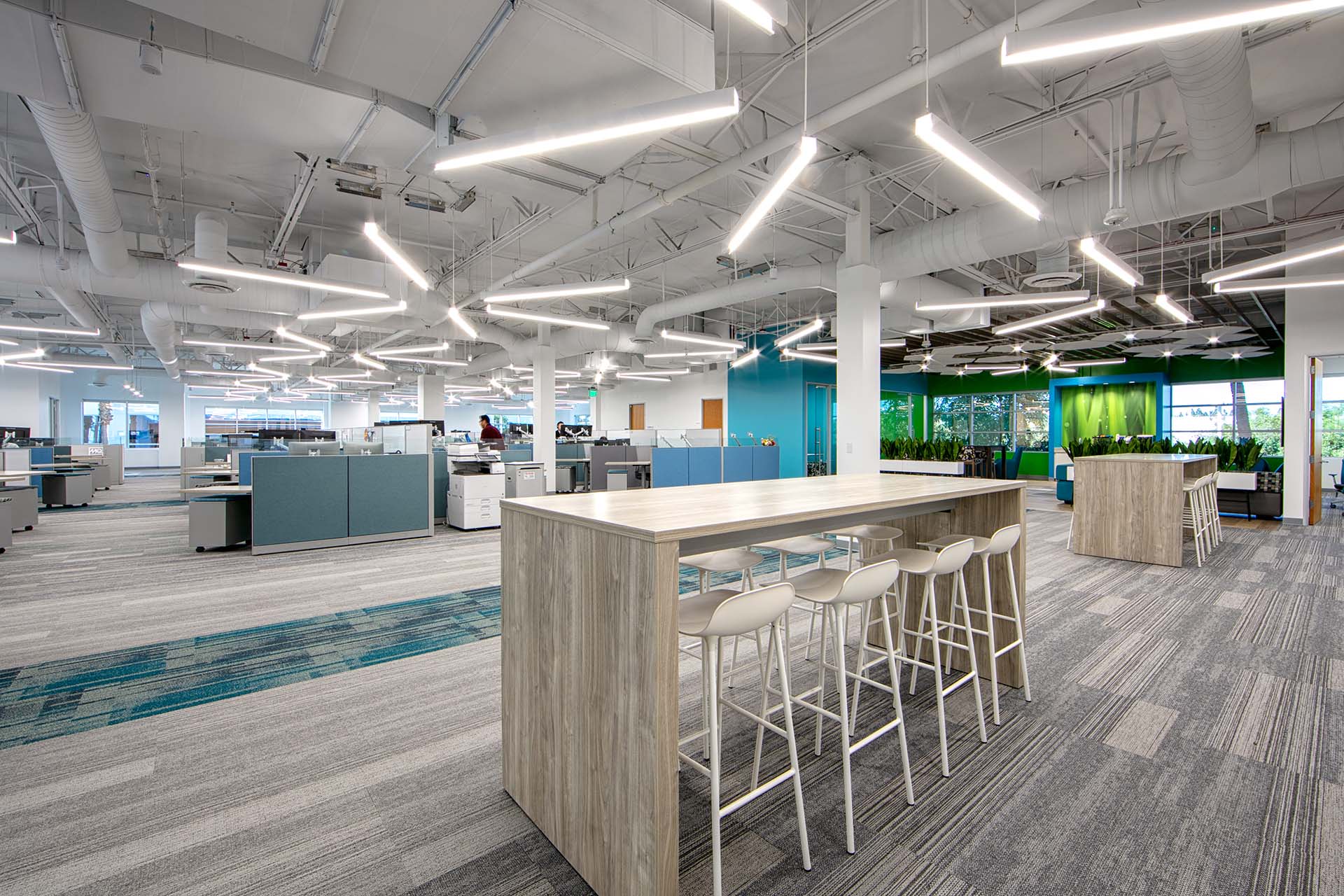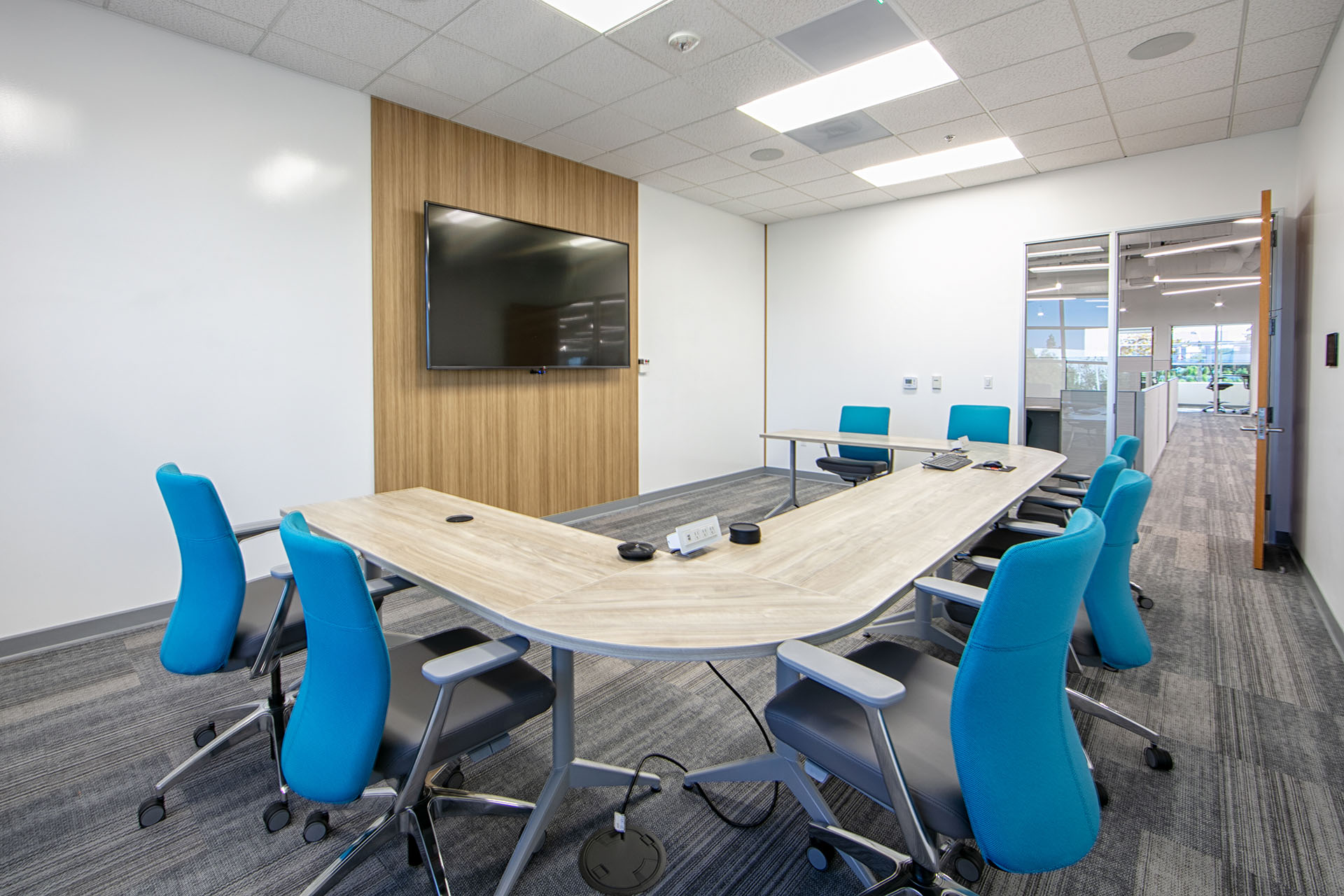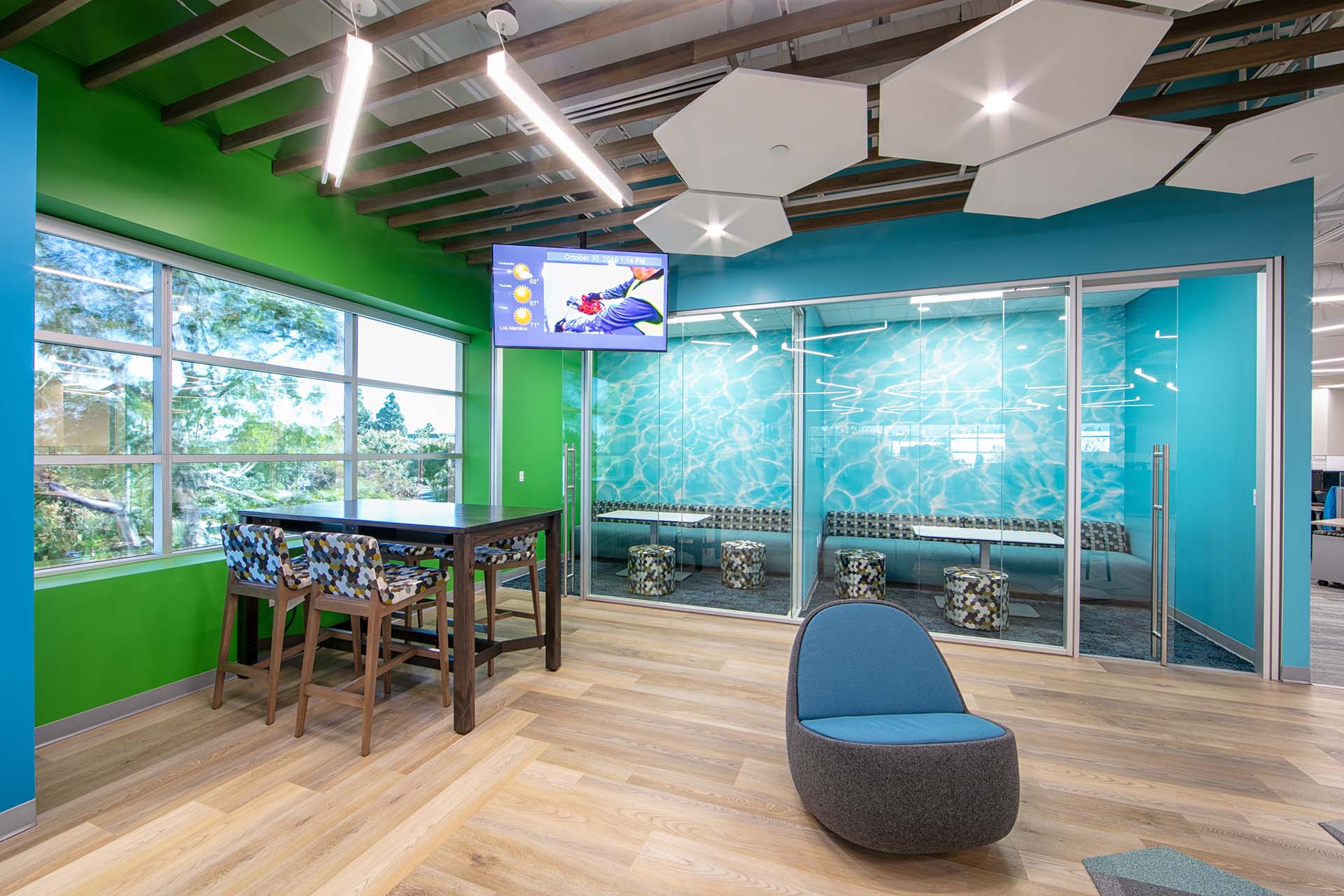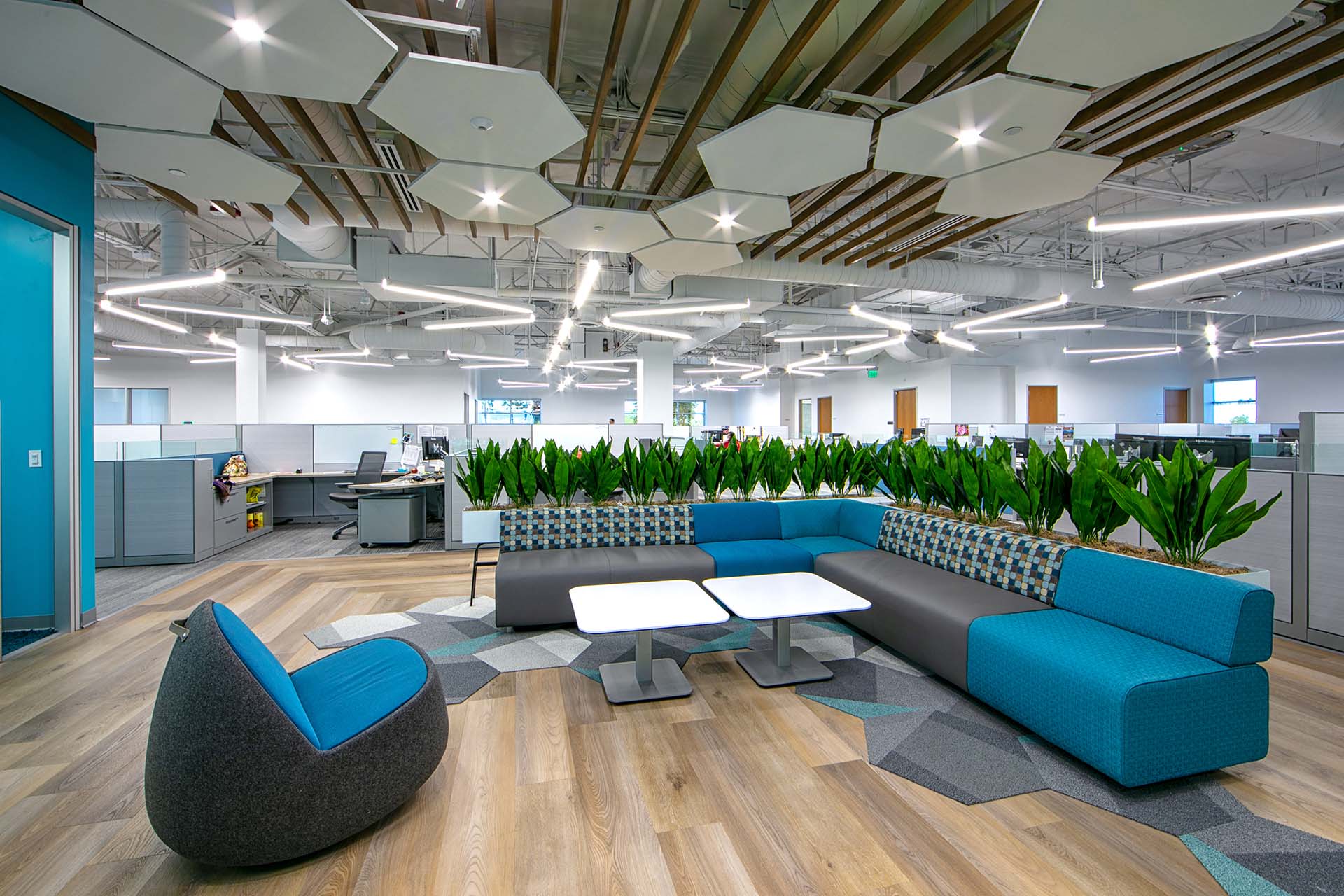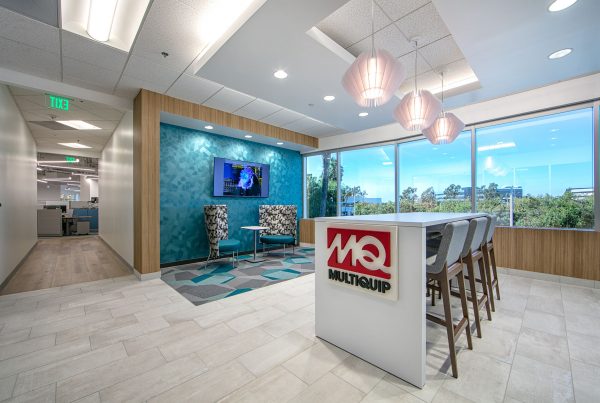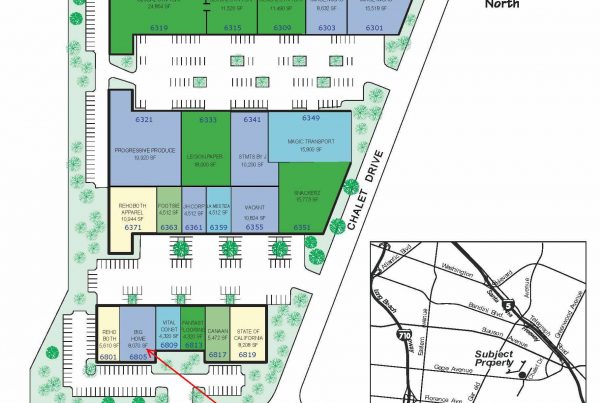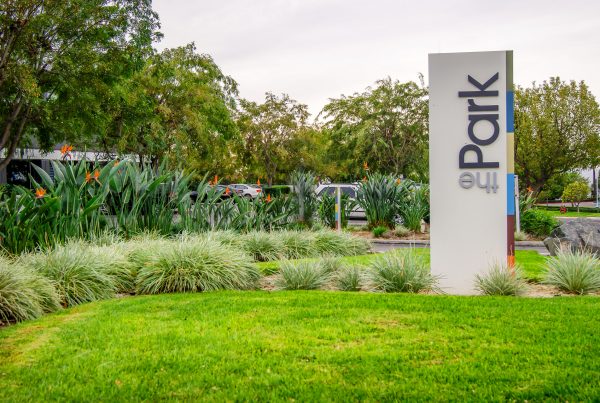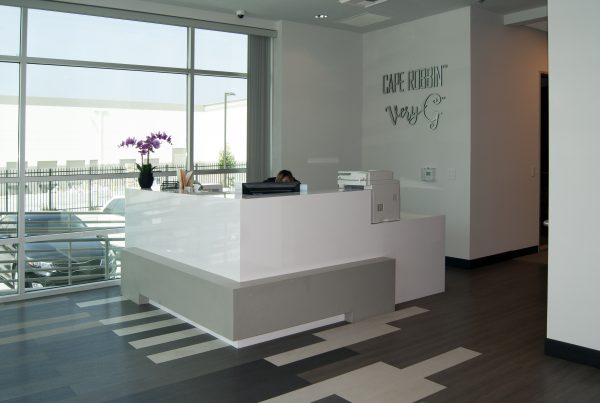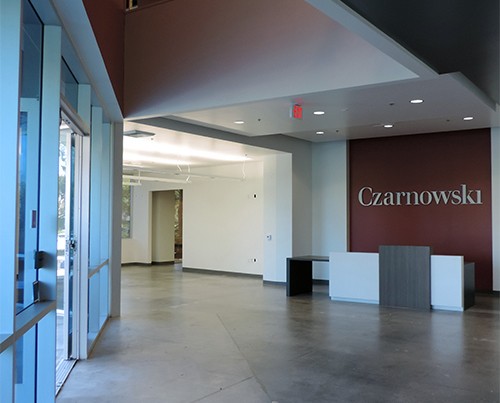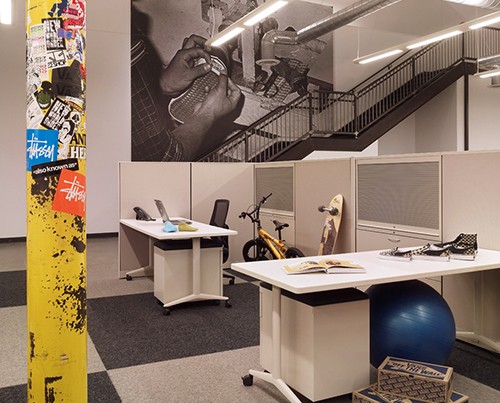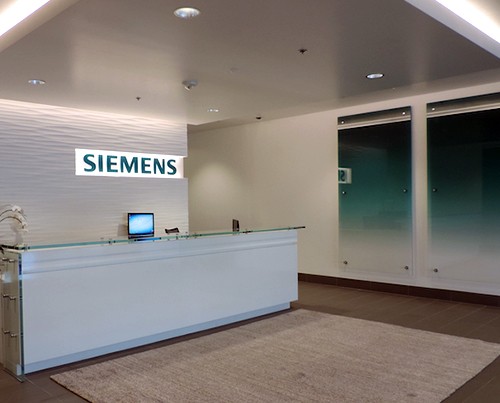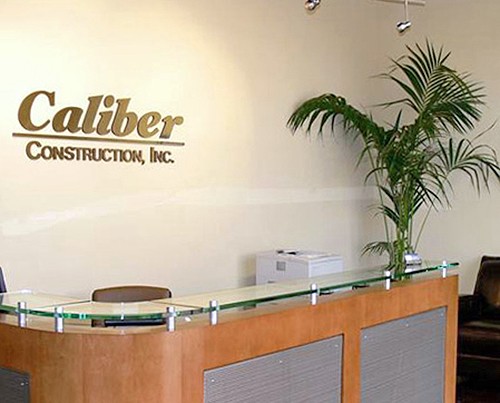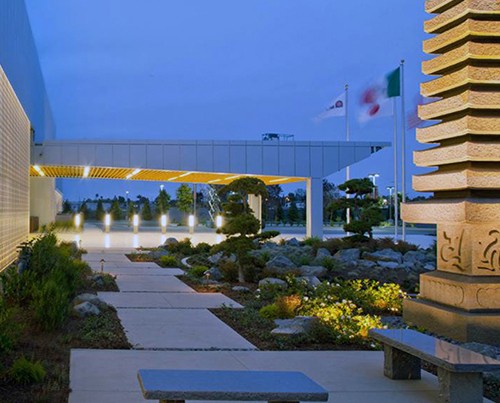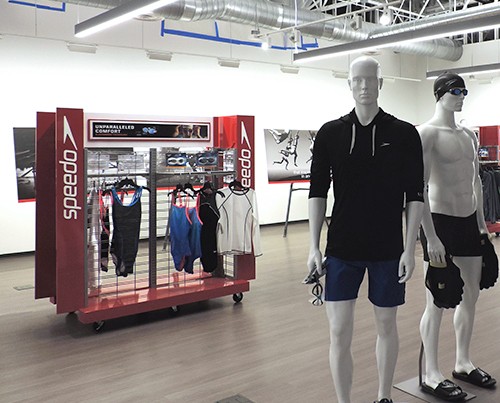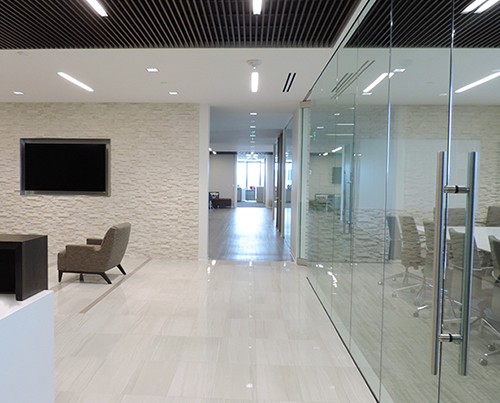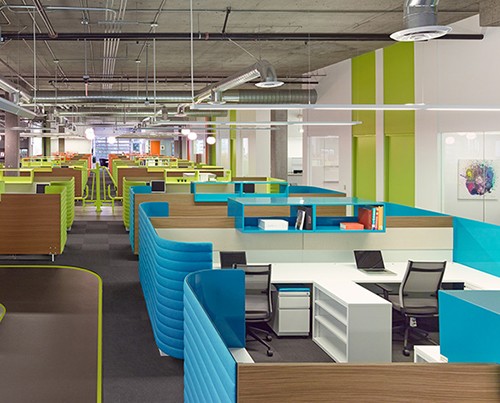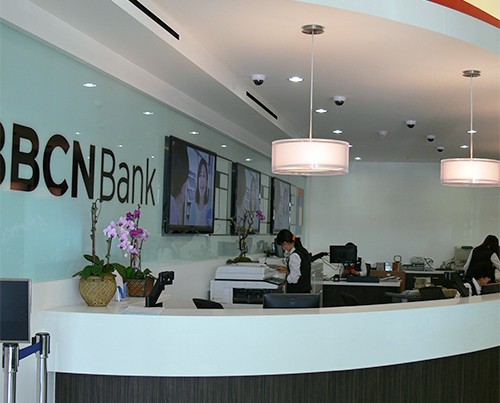Across three decades, Multiquip expanded its corporate space which resulted in having a team working on five different floors across three separate buildings. While it made sense to expand into other buildings, this type of corporate headquarter expansion led to a haphazard office design, duplicative facilities, and overall wasted space. The Multiquip leadership realized that their office layout actually reduced productivity, discouraged collaboration, made it harder to recruit, and diminished their team spirit. Caliber was brought in to bring the forward-thinking creative space design from DRA Architects to life and breathe new life into their corporate culture.
Today’s Multiquip realizes a unifying, highly creative and functionally relevant space that marries an open environment with spaces designed for private meetings, quiet working and sequestered conversations. Now the staff actually connects face-to-face instead of avoiding the walk between buildings that included traffic dodging. The now L-shaped structure boasts wings that protrude from a circular center area with collaboration spaces in each, one central reception area, a work café that can fit the entire team for an all-hands-on-deck conversation that doesn’t require amplification, coffee bars for meetings and work collabs, video conference rooms, a board room, and the kind of interaction and joie de work vivre they have never experienced.

